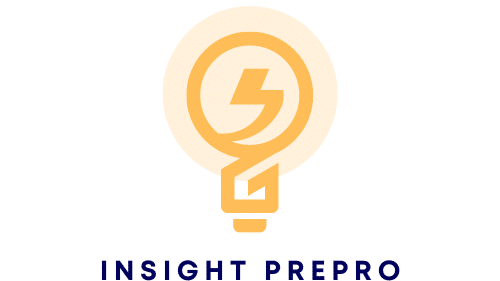In the realm of online education, one concept has become increasingly popular: gamified learning. This approach incorporates core elements of gameplay into learning activities, making the whole experience much more engaging and interactive. In a digital world where students are more accustomed to apps, games, and other online interactions, gamification serves as an innovative way to encourage learning and retention.
Gamification leverages higher motivation, enhances engagement, and promotes active learning. It offers elements such as points, badges, and leaderboards to evoke students’ competitive spirit and motivate them to study harder.
Also to read : How Are AI Algorithms Transforming the Recruitment Process?
In this article, we will explore how gamified learning can significantly boost student engagement, particularly in the context of online education.
The Power of Gamification in Learning
Gamified learning takes the essence of games – fun, exciting, and competitive – and applies it to the educational context. It combines elements like points, badges, leaderboards, and levels with the course content to make learning more enjoyable and engaging.
Additional reading : What Innovations in Biodegradable Packaging Are Reducing Food Waste?
When students find the learning process enjoyable, they are more likely to stay focused, motivated, and engaged, leading to improved retention and understanding of the course material. In essence, gamification turns learning into a game, making it more appealing, particularly to the digital-native generation.
How Gamification Promotes Engagement and Motivation
A cornerstone of gamified learning is its ability to leverage students’ innate desire for competition, achievement, and status. By awarding points and badges for achievements and displaying these on a leader board, students are motivated to engage more deeply with the course material.
This motivational drive is similar to what you might experience when playing a game on a gaming console or a mobile app. The more you play, the more points you earn, and the higher your status becomes. Similarly, in a gamified learning context, the more you engage with the course material, the higher your score and status in the class.
Moreover, these gamified elements also provide immediate feedback, a crucial aspect of learning and development. Every time a student earns points or badges, they immediately know they are on the right track, which only serves to further motivate them.
Programming and Google’s Gamified Learning
Let’s take a look at how major tech companies, like Google, are using gamified learning to teach complex subjects such as programming.
Google’s area 120, an experimental product division, created a mobile game called "Grasshopper" to teach coding in a fun and interactive way. The game uses puzzles to teach JavaScript, allowing learners to solve problems and earn achievements as they progress.
By turning learning into a game, Grasshopper makes the daunting task of learning to code much more approachable and fun. It taps into the competitive nature of games to keep users motivated and engaged, showcasing how gamification can be a powerful tool for learning.
Implementing Gamification in Higher Education
While gamified learning holds much promise, implementing it in higher education isn’t without challenges. For one, not all students may respond to gamification in the same way.
However, multiple studies, like the one published by CrossRef, have shown that the majority of students, regardless of their background, respond positively to gamified learning. This positive response is primarily due to the increased engagement and motivation gamification provides.
When incorporating gamification into an online course, it’s critical to ensure that the game elements are closely tied to the learning objectives. For instance, earning points or badges should be based on demonstrating understanding or skill mastery, not just on participation or completion.
Overall, gamified learning has the potential to revolutionize online education. By making learning fun and interactive, it can significantly boost student engagement, improve comprehension, and make the entire learning process more enjoyable. And while there are challenges to its implementation, the benefits it offers make it worth exploring.
Exploring the Impact of Gamification in E-Learning through Scholarly Insights
Scholarly research provides pivotal insights into the impacts of gamified learning on student motivation and engagement. A vast number of studies have been conducted, using control groups to study the effects of gamification on students’ learning experience.
A comprehensive study published in Google Scholar examined how game elements such as points, badges, and leaderboards affected students’ motivation and engagement. The research incorporated a control group and an experimental group subjected to the gamified learning environment. The findings indicated that the students in the gamified group exhibited higher levels of intrinsic motivation and were more engaged compared to the control group.
Further, another study published in the Journal of Higher Education focused on how gamified learning influenced student performance and motivation in a higher education setting. The study found that students exposed to game-based learning showed significantly improved academic performance, increased motivation, and greater engagement.
Notably, this increase in motivation and engagement wasn’t just limited to the learning period. The study found that these benefits extended beyond the learning phase, leading to long-term changes in students’ attitudes towards learning.
These studies underline the significant role of gamified learning in transforming the learning experience, making it more engaging, motivating, and productive. Therefore, it is clear that gamification in education is more than a fad; it’s a powerful tool that can significantly improve the learning environment and outcomes in online education.
Conclusive Thoughts on the Role of Gamification in Online Education
To conclude, gamification in e-learning provides an innovative approach to enhance student engagement and motivation. By incorporating game elements such as points, badges, and leaderboards into the learning process, educators can transform the learning experience into a more engaging and interactive one.
Research insights from reputable sources like Google Scholar have shown the positive effects of gamification on students’ motivation and engagement. These studies have proved that gamified learning can lead to improved academic performance, increased intrinsic motivation, and a more positive attitude towards learning.
Practical examples, like Google’s Grasshopper, illustrate how gamified learning can make complex subjects like programming more approachable and enjoyable.
Despite the challenges of implementing gamification in higher education, such as the varied response among students, the overwhelming benefits make it worth pursuing. However, it is important to note that for gamification to be truly effective, the game elements need to be closely tied to the learning objectives.
In essence, gamifiable learning provides an innovative approach to transform the learning environment into a more engaging, interactive, and motivating space. As we continue to navigate the world of online education, it is clear that gamified learning will play a pivotal role in shaping the future of education.






